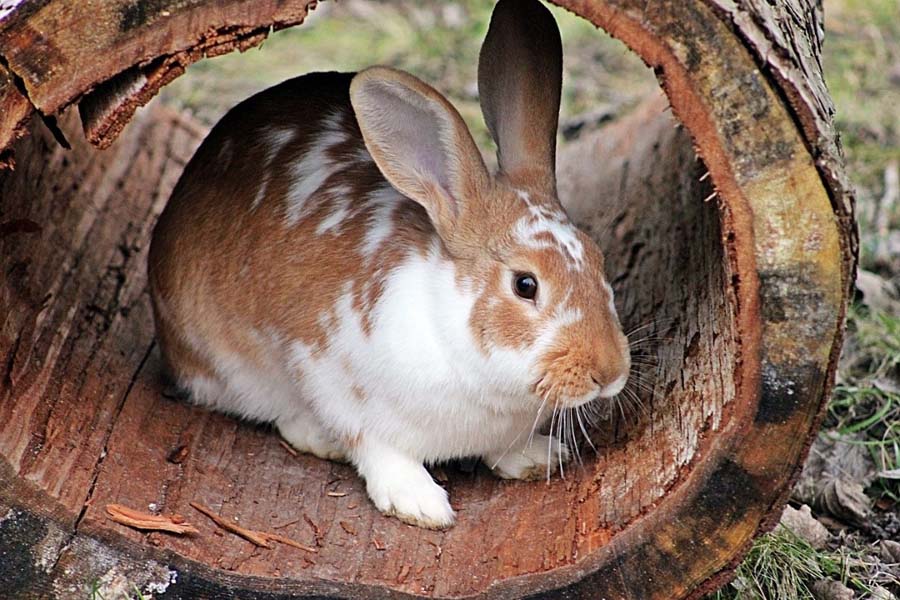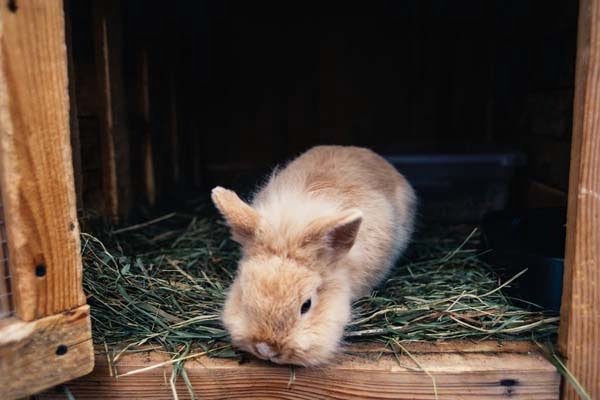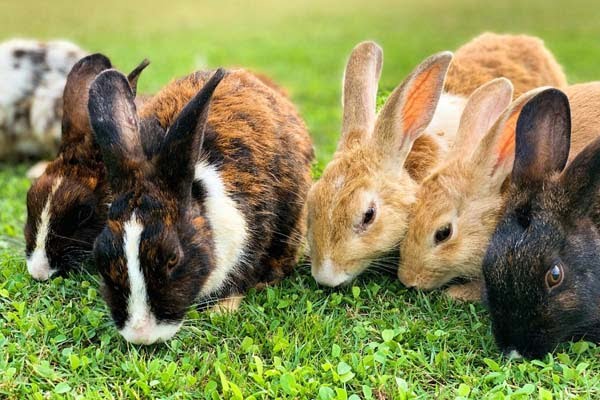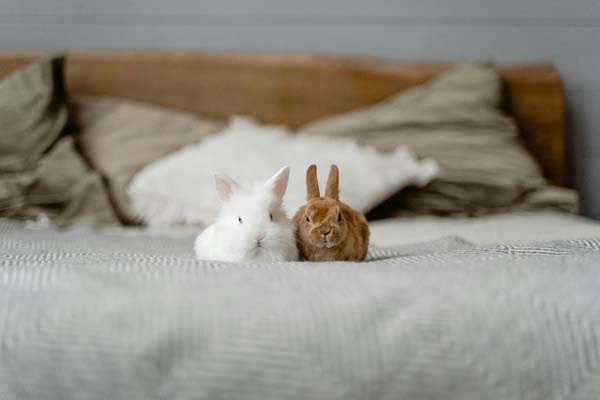A Turramurra Vet Pet Care Article
Simple Steps to Enrich your Rabbit’s Life

Simple Steps to Enrich your Rabbit’s Life
by Freya Britt-Lewis, Pet Health Care Writer
Rabbits are active, inquisitive and highly social animals that make fantastic family pets. According to the Animal Medicine Australia’s ‘Pets in Australia: A national survey of pets and people’ around 4% of Australian homes own small mammals, or ‘pocket pets’. Out of these households, rabbits are the most popular choice!
The welfare of your rabbit relies on a variety of different things including housing, toys, socialisation and appropriate handling. When considering rabbit welfare in the home environment, it is important to acknowledge that they are a prey animal. For this reason, your rabbit will respond differently to being handled than your dog. Most rabbits do not really enjoy being picked up as they instinctively associate it with being caught by a predator.
Encourage your rabbit to exhibit their natural behaviours, such as:
- Foraging and digging
- Roaming, running and jumping
- Climbing
- Socialising
Housing

Your rabbit should have access to a hutch with areas to rest and hide. Ideally, the cage should have multiple levels with stairs or a ramp to encourage climbing. They should also have an area that allows them to roam safely. You can do this by building a pen around your rabbits hutch and opening the door. This will encourage your rabbit to explore, forage and exercise.
Toys
Activities should be supplied to your rabbit to engage them mentally and to encourage their natural behaviours. The use of toys allows your rabbit to exercise, investigate, forage, chew and scent mark.
Each rabbit will engage with toys differently, so spend time finding ones that suit your pet’s personality and play style! A few examples of toys for rabbits can be:
- Chew toys
Rabbits naturally bite, or ‘gnaw’, at objects. Rabbit teeth constantly grow, so it is vital to supply your rabbit with good quality outlets for this behaviour. These types of toys allow your rabbit to investigate new textures and sensations. - Balls or throwing toys
Some rabbits enjoy tossing their toys. This activity will reduce stress in your pet and promote playful exercise. - Puzzles
Mental stimulation is crucial for a happy rabbit. Provide puzzle mats to engage your rabbit. These items will also allow for foraging behaviours. - Tunnels and hideaways
Supply tunnels and boxes for your rabbits to explore. These will also provide a sense of safety for your rabbit.
Rabbits enjoy variety, so it is important to regularly swap out toys to create an engaging environment and prevent boredom!
Here are a few options to enhance your rabbit’s life using only a few household items:
- Wrap high value treats in paper and stuff paper rolls with hay. Let your rabbit rip and chew to get inside! Increase the difficulty by attaching these to the wall of your rabbit’s hutch.
- Fill up a box with hay and scatter some treats inside. This will encourage your rabbit to dig and forage for their food.
Remember to choose materials that are non-toxic and have smooth and rounded edges. You should always inspect the toys before giving them to your rabbit to make sure they are undamaged and safe to use.
Socialisation

Rabbits are social animals. In the wild, rabbits spend their time in groups eating, grooming, playing and relying on one another for safety. Rabbits will become isolated and depressed if they don’t have company (human or bunny!). This will increase their risk of illness and health concerns.
Fostering a trusting relationship with your rabbit will enhance your pet’s quality of life and yours!
Here are a few simple ways to socialise your rabbit:
Playing
Using the toys and tricks listed above, spend time with your rabbit playing with them. Each rabbit will interact with their owner differently, so take the time to learn your rabbit’s body language to ensure it is having fun!
Rabbit body language
What does a happy rabbit look like?
A happy rabbit will have a confident body posture and curious body language. Sometimes, they will zoom, or ‘binky’. This behaviour is when your rabbit will run around in circles and hop into the air!
What about a frightened rabbit?
If your rabbit is scared, they will have a rigid posture and alert demeanour. They will also run away to hide.
Handling
Acclimatise your rabbit to handling with positive interactions like giving treats. As prey animals, rabbits can be easily startled or scared. Try to engage your rabbit on ground level, as this is generally considered less threatening.
Grooming
Grooming is not only a bonding exercise but is also a vital aspect of your rabbit’s healthcare. Rabbits have sensitive digestive systems and cannot vomit, which means swallowing too much hair can cause severe illness such as gastrointestinal stasis or even obstruction. Short-coated rabbits should be brushed at least twice a week, whereas long coated rabbits should be brushed daily.

Just like dogs and cats, rabbits should be brought into the vet for an annual health check and vaccination against deadly calicivirus. If you would like more information, or would like to make a booking, please phone the clinic to speak to our friendly receptionists on 9988 0198 or at www.turramurravet.com.au to book online.
If you would like further guidance, or are concerned for your bird, phone us on 9988 0198 to book a veterinary consultation.

